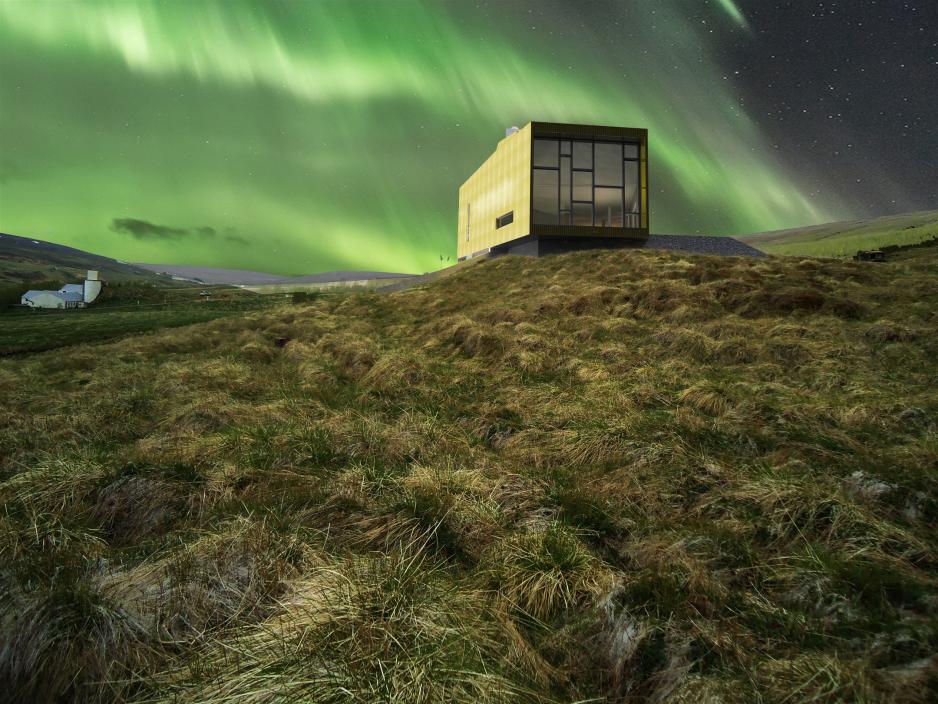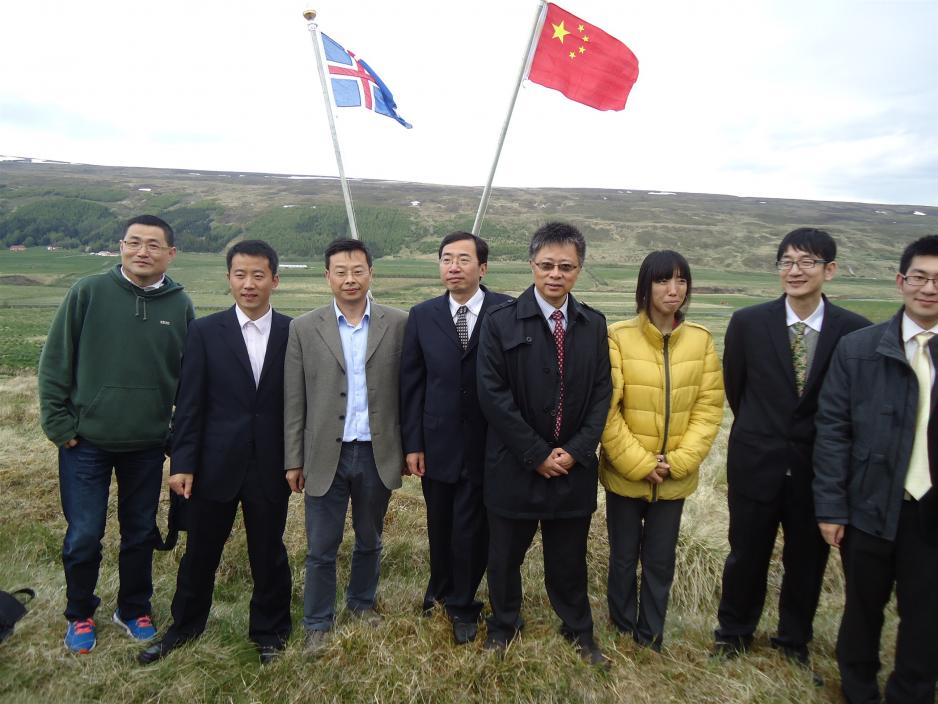"Solar-terrestrial" interaction between Iceland and China

Four years after Iceland and China signed an agreement on Arctic cooperation one essential scientific component is about to kick off later this year. The construction works of the Aurora Observatory at Kárhóll are currently in the final stage with research to commence in October 2016.
The joint station is a scientific cooperation between a broad variety of Icelandic and Chinese research institutions. Lead by the Icelandic Centre for Research (RANNIS) and the Polar Research Institute of China (PRIC), the aim of this collaboration is to further the scientific understanding on solar-terrestrial interaction and space weather. Accordingly, scientists from both countries and international visiting scientists will conduct polar upper atmosphere observations, such as auroras or geomagnetic field variations. The northern lights stations will serve the purpose to learn more about the interplay between the sun and the magnetic field of the earth and the reaction of the magnetic fields when hit by solarwinds. Eventually, the Icelandic-Sino partnership on aurora observation should open for the possibility of cooperation in other fields of Arctic science, particularly in the fields of biology and climate research.
Icelandic-Sino (research) cooperation
The promotion of scientific and environmental research constitutes an essential pillar in China’s effort to gain an Arctic-regional foothold. Thus, when a total of six bilateral agreements and declarations on mutual Arctic cooperation between Iceland and China were signed back in 2012, research collaboration occupied an important place. A first workshop on China-Iceland Arctic research cooperation was already organised a year earlier when a first scientific delegation from China, including representatives from the State Oceanic Administration (SOA), the Chinese Arctic & Antarctic Administration (CAAA) and PRIC visited the Nordic island. Ever since then, Iceland has actually become an essential Nordic-Sino bridge builder and, for instance, hosted the 2nd conference of the China-Nordic Arctic Research Center (CNARC) in Akureyri in spring 2014. Moreover, back in 2012 and after traversing the Northern Sea Route, the Chinese icebreaker Xue Long – Snow Dragon – stopped in Iceland for a five-day research visit. It was the first formal visit to Iceland and publically illustrated the Arctic cooperation efforts between Iceland and China that were decided and pronounced earlier that year.
Science diplomacy
Eventually, the role of science fulfils a two-fold function. On the one hand, it serves the Chinese interest to acquire more adequate knowledge on the effects of Arctic climate change on its very own soil. Thus, it has been strongly argued that recent weather extremes in China are based on the changing Arctic climate. Moreover, melting Arctic (sea) ice and rising sea levels as a consequence thereof could threaten China’s coastal centres.
On the other hand, science and scientific cooperation can facilitate diplomacy and accordingly improve international relations and the interaction between various countries. In the Arctic context, science diplomacy plays an essential role in integrating non-Arctic states, in particular Asian powers such as China, India, Japan or South Korea. With researchers often acting as ‘mini-diplomats’ when interacting with their international colleagues, science can essentially serve diplomacy as a good foundation for international and/or regional governance. Hence, it contributes to the creation of trust between nations and its representatives. According to Marc Lanteigne, a Senior Research Fellow at the Norwegian Institute of International Affairs (NUPI), science diplomacy has actually become the cornerstone of China’s engagement in the Arctic.
The bilateral scientific cooperation in the field of northern lights observation between Iceland and China may not convince a hard-core geopolitician about China’s cooperative Arctic endeavour and approach. However, it functions as an essential component in broader Arctic science diplomacy and effectively relates on how to peacefully integrate Arctic-outsiders into regional (governance and research) structures.
The Aurora Observatory at Kárhóll, northern Iceland, is approximately 45min from Akureyri. The centre will be open to the general public, aiming to build a bridge between scientific research and the daily life. Accordingly, an integrated Guest Centre will host a permanent exhibition. All observation data will be made available and open to international scientific community. The station, owned by the Icelandic Aurora Observatory foundation, is financed via an annual rent paid by PRIC.

